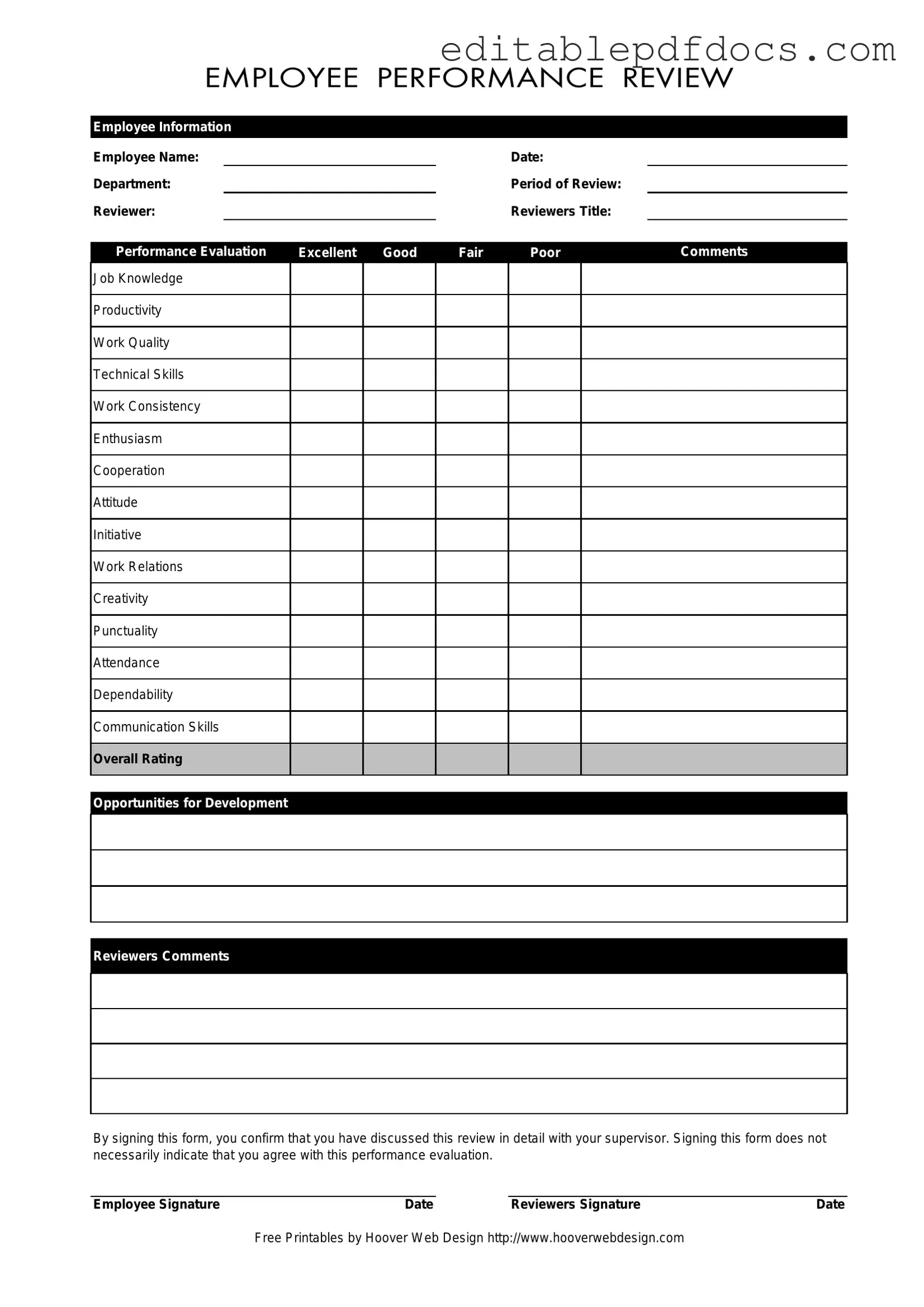The Employee form serves as a crucial tool in the performance evaluation process, providing a structured way to assess an employee's contributions and areas for improvement. This form captures essential employee information, including the employee's name, department, and the period of review, along with details about the reviewer and their title. It features a comprehensive evaluation section where various performance metrics are rated, such as job knowledge, productivity, work quality, and technical skills. Each category allows for a rating of excellent, good, fair, or poor, accompanied by space for comments to provide specific feedback. Additionally, the form evaluates interpersonal attributes like cooperation, attitude, and communication skills, ensuring a well-rounded assessment. The overall rating summarizes the employee's performance, while opportunities for development highlight potential areas for growth. At the end of the form, both the employee and the reviewer are required to sign, indicating that the review has been discussed, although signing does not imply agreement with the evaluation. This structured approach not only aids in performance management but also fosters open communication between employees and supervisors.
